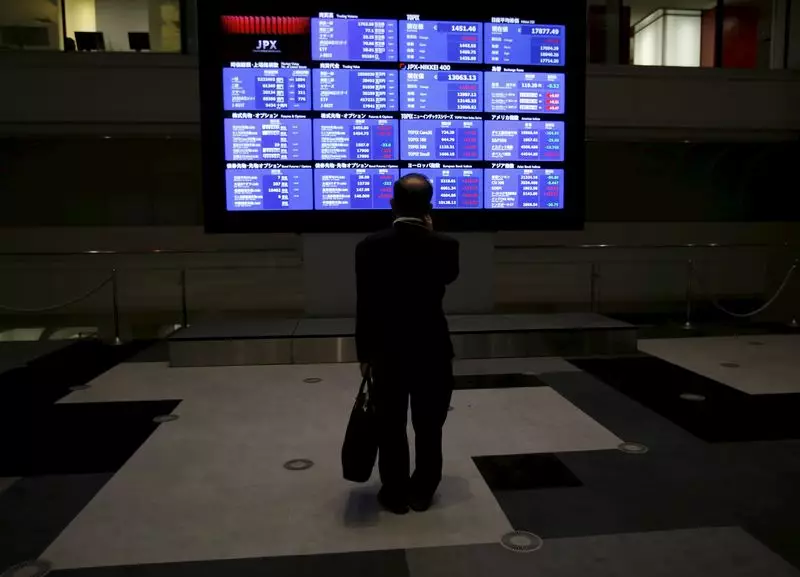In the realm of global finance, the unfolding dynamics of Asian markets are constantly influenced by various economic indicators and government interventions. On a recent Monday, trading activity in Asia was marked by notable restraint, reflecting a blend of anticipation and anxiety among investors. The hesitance primarily stemmed from the uncertainty surrounding the Chinese government’s stimulus pledges made over the previous weekend. Although the promises of increased fiscal support were significant, the lack of concrete details left many market participants uneasy. With the promise of enhanced debt issuance by Finance Minister Lan Foan, the significant lack of clarity regarding the total scale of the stimulus raised questions about the potential durability of the recent stock market rally in China.
This apprehension is particularly pertinent considering that Chinese equities have experienced substantial growth following a series of stimulus announcements since late last month—billed as the most robust economic intervention since the onset of the pandemic. As investors and analysts alike were left waiting for more defined actions, the potential for a market backlash loomed larger. Ray Attrill, head of FX strategy at National Australia Bank, noted that the absence of a clear fiscal stimulus announcement left the market vulnerable to disappointment. Such sentiments underlined the fragility of investor confidence, suggesting that a lack of explicit measures could hinder the potential for sustained market recovery.
Recent economic indicators from China have engendered further caution among investors. Sunday’s data release illustrated an unexpected decline in consumer inflation for September, coupled with a deepening of producer price deflation. These developments have heightened the urgency for further stimulus measures. As the offshore yuan depreciated against the U.S. dollar, falling by 0.2%, it became apparent that traders were reacting not only to the stimulus ambiguity but also to the concerning economic signals emanating from China.
Meanwhile, the Australian dollar—commonly viewed as a surrogate for gauging onshore yuan fluctuations—also slipped, reflecting broader concerns regarding economic stability in China. In a contrasting evaluation, analysts at Goldman Sachs adjusted their GDP predictions for China up to 4.9% from 4.7%, citing the potential positive impacts of the government’s recent fiscal strategies. Nevertheless, they remained cautious, reiterating that structural factors influencing China’s economy, such as demographic challenges and debt issues, would not see immediate improvement from these temporary policy tweaks.
As trading conditions in Asia remained subdued, the broader global market landscape reflected a similar sentiment. With Japan closed for a holiday, the liquidity in these markets further diminished. U.S. stock futures mirrored this tension, edging down as traders adjusted expectations following last week’s economic data that hinted at a resilient labor market and consumer spending. As forecasts for significant interest rate cuts by the Federal Reserve dwindled, the cumulative effect was felt across global currencies. The British pound and the euro both saw minor losses against the dollar, highlighting a broader strengthening of the greenback as uncertainty persisted in the plan for U.S. monetary policy.
This fluidity in currency markets underscores the interconnectedness of global economies and the far-reaching impacts of China’s fiscal health. The demand for commodities, too, reflected cautious trading sentiment. Oil prices, for instance, fell significantly as fears of lower demand loomed large amidst unclear Chinese stimulus plans combined with lackluster inflation figures.
As market participants persist in fumbling through a landscape of unresolved economic signals, the inherent uncertainty around Chinese fiscal policy is likely to continue influencing investor behavior in Asia and beyond. The delicate balance of maintaining investor confidence amidst a backdrop of nuanced economic realities forms the crux of current market discourse. In the coming days, all eyes will be on China’s third-quarter GDP data release, which will serve as a critical indicator of the nation’s economic trajectory. The impending data could either bolster investor sentiment or exacerbate existing fears, reaffirming the notion that even the slightest shift in narratives can lead to significant market reactions. Understanding these multifaceted dynamics is essential for navigating the complexities of the contemporary financial landscape.


Leave a Reply